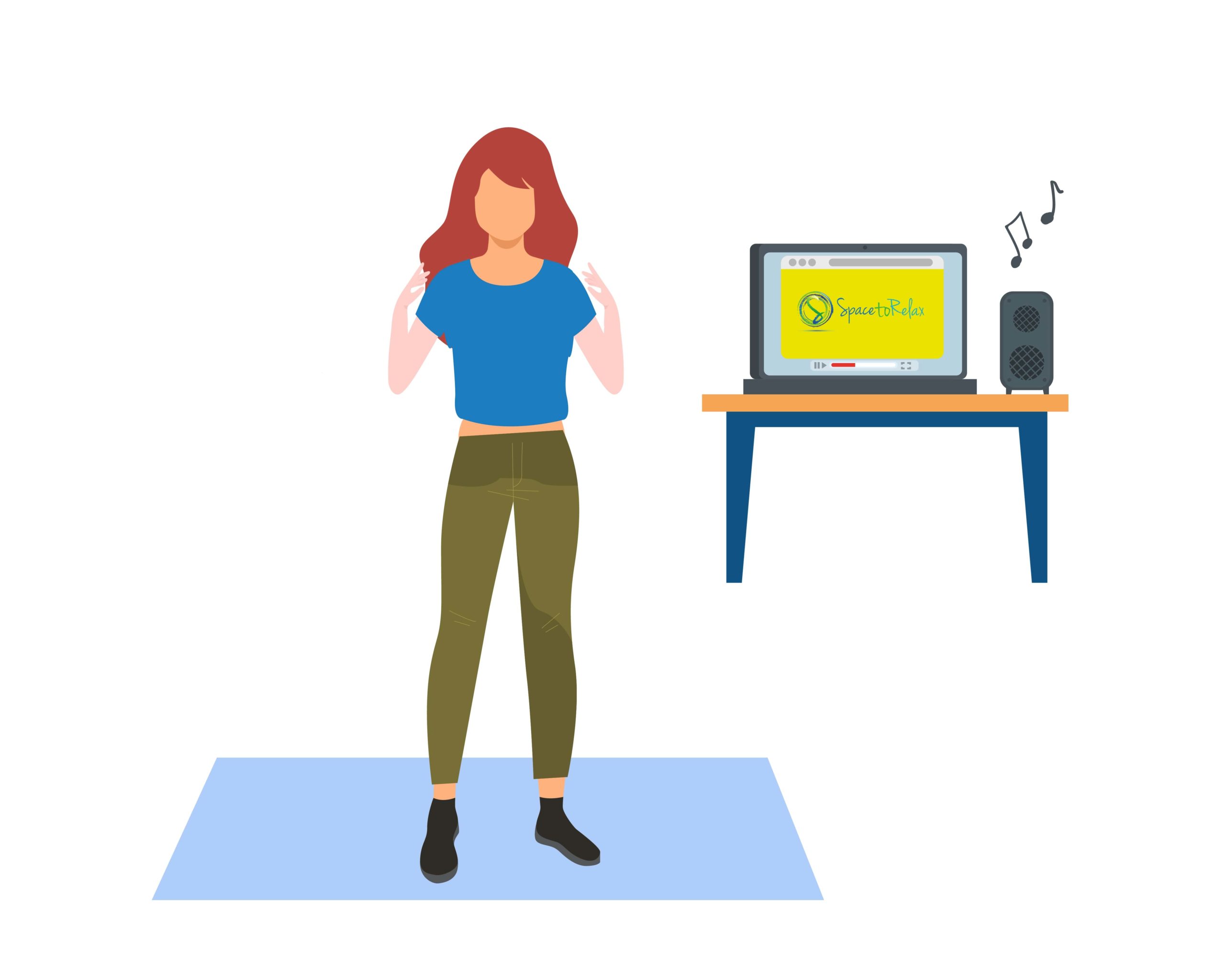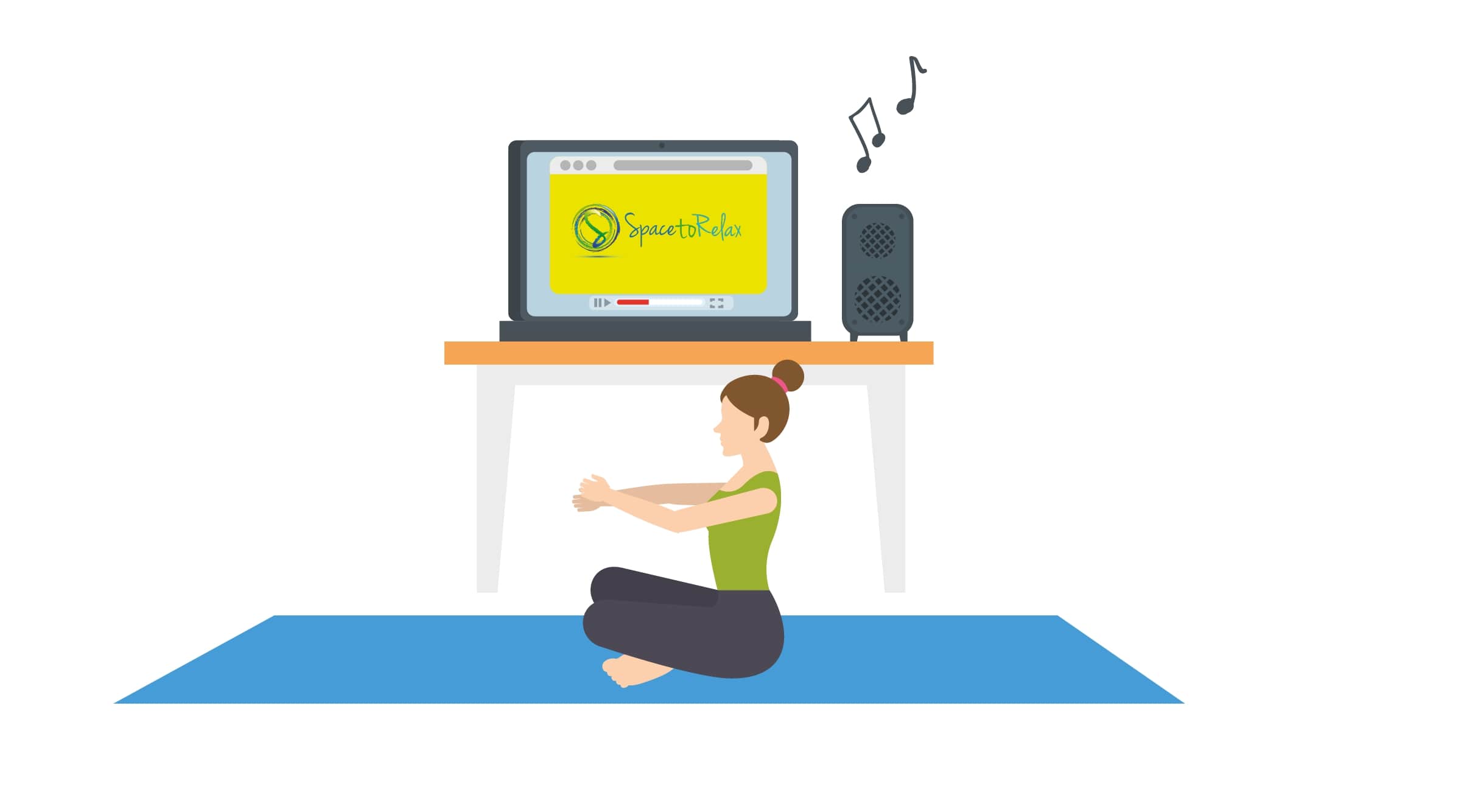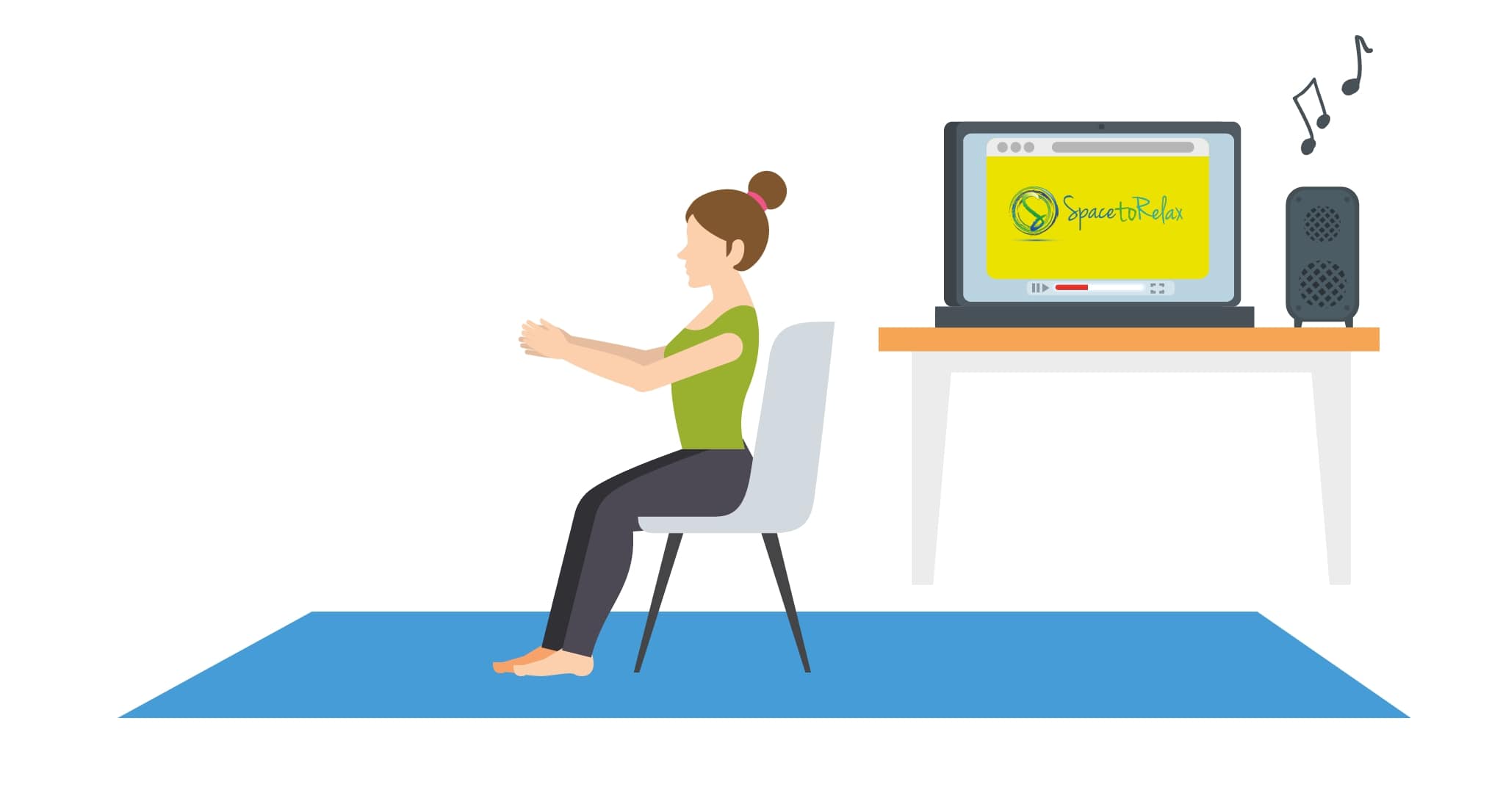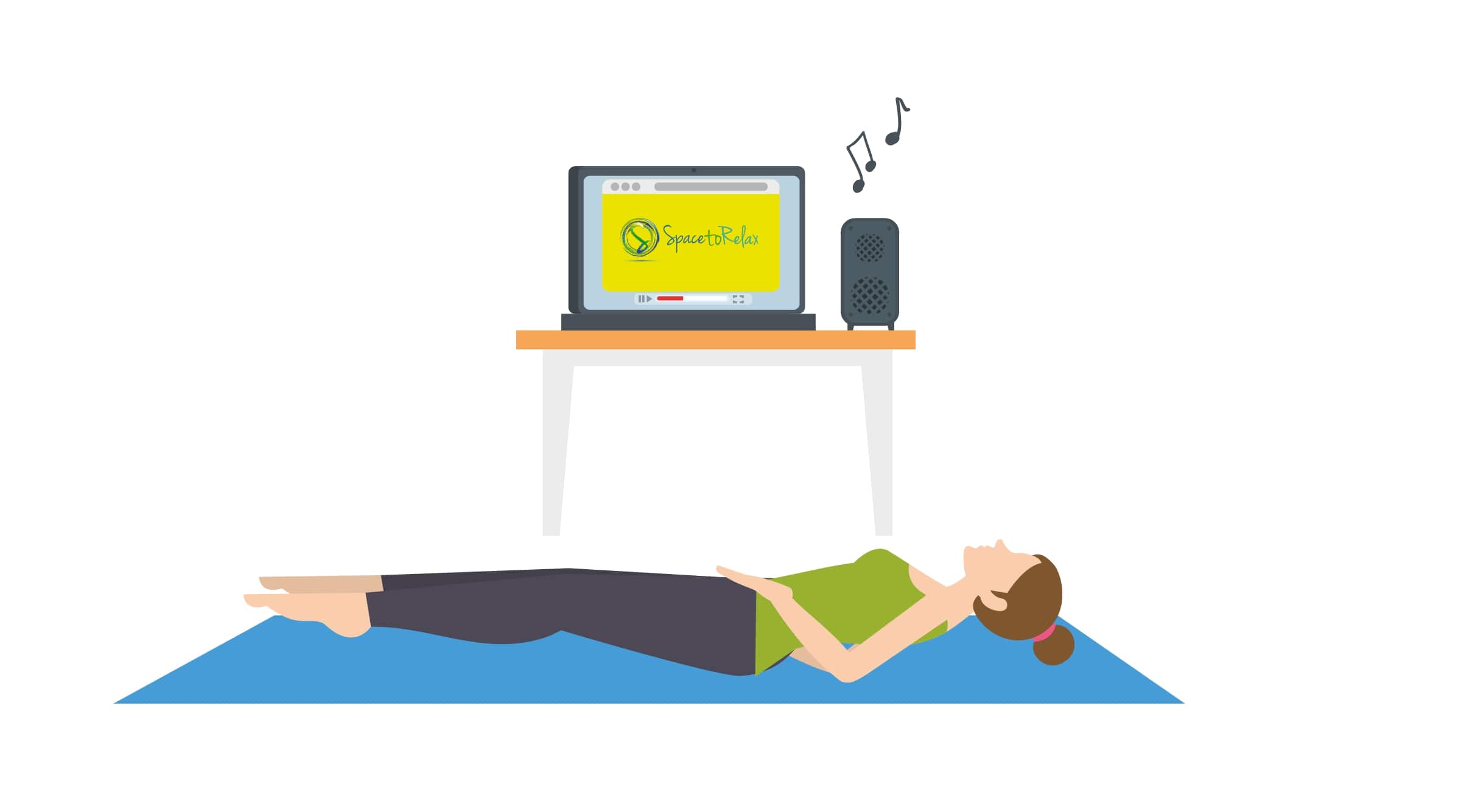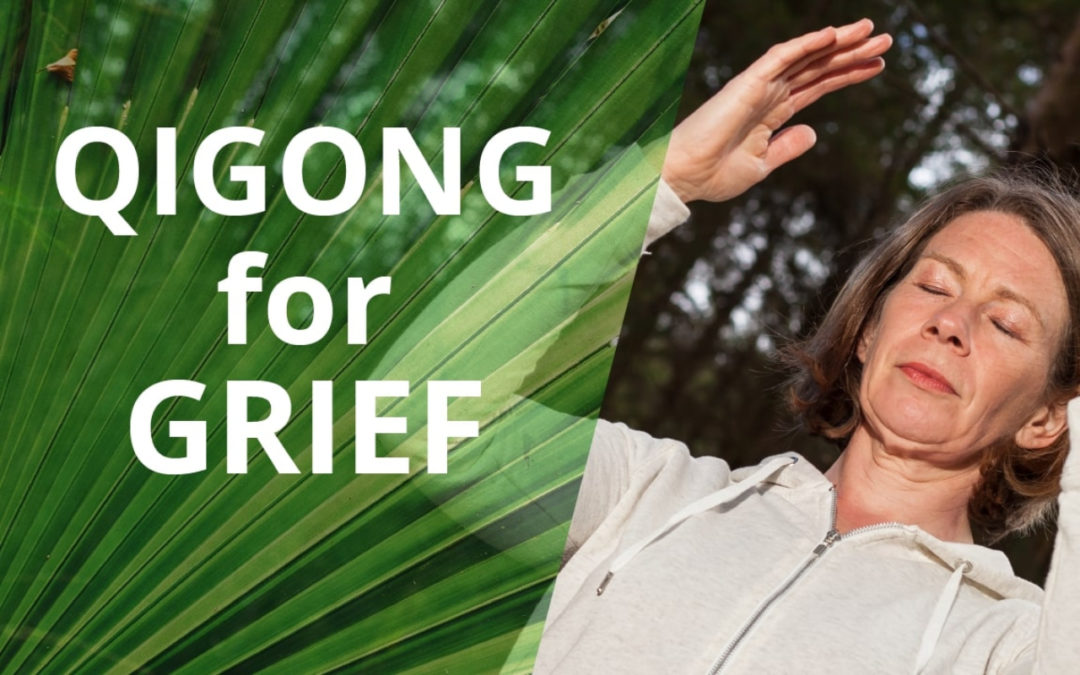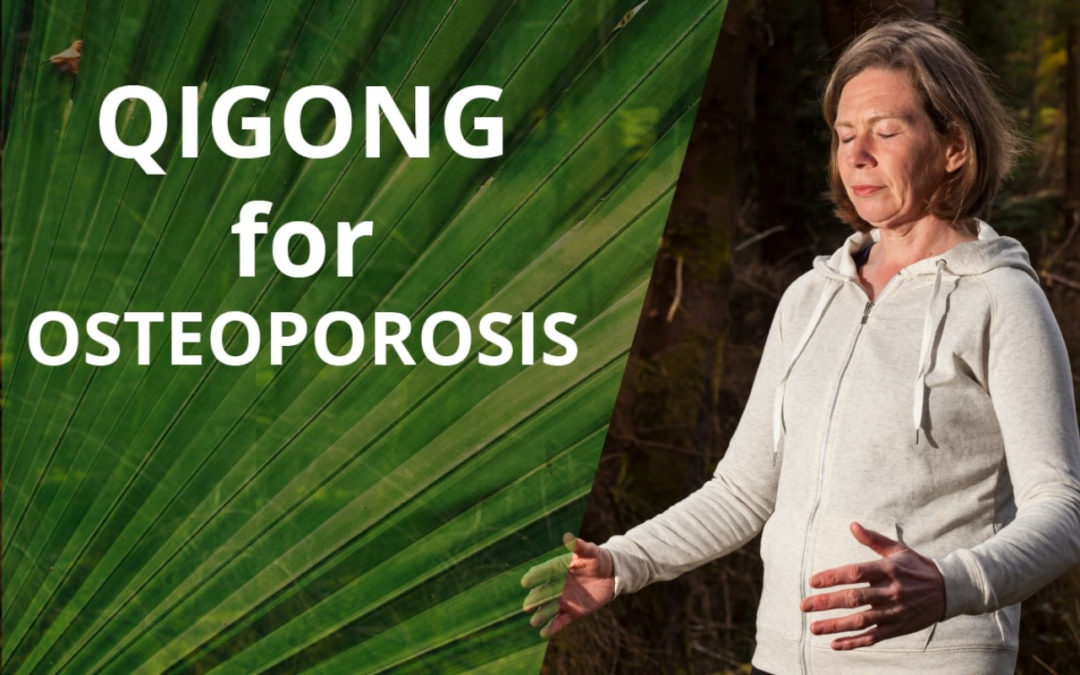
Qigong For Beginners – An Ultimate Guide
Table of Contents
- Qigong For Beginners – Introduction
- What is Qigong: The Beginning
- Qigong For Beginners: 10 Exercises
- 1. Abdominal Breathing or Diaphragmatic Breathing
- 2. Qigong For Beginners (5 Minutes)
- 3. Qigong For Beginners – Recharge Exercises
- 4. Seated Qigong For Beginners Exercise
- 5. Qigong For Beginners – Sleep Method
- 6. Qigong For Beginners – Weight Loss
- 7. Qigong For Beginners – Meditation To Ease Pain
- 8. Qigong For Beginners – Shoulder & Arm Exercises
- 9. Qigong For Beginners – Healthy Release of Grief
- 10. Easy Qigong For Beginners Stretching Exercise
- Myths about Qigong
- Story Behind Space To Relax
- I Believe That…
- Summary
Qigong For Beginners – Introduction
Welcome to your “Ultimate Guide To Qigong for Beginners”! In this article, you’ll learn about the ancient origins and health benefits of Qigong, how to use Qigong for health and wellbeing and the mysterious connections Qigong has with a mythical sixth sense possessed by all animals.
To make sure you are not overwhelmed by the theory and exercises I have the ten most effective and simple exercises to start your Qigong journey. I chose these based on feedback from my students as to the most popular and enjoyable Qigong for beginners; routines which they have benefited from over the years. There is something here for everyone so please choose the ones which look the most appealing to you and follow along with the simple routines in the videos.
Read below about the common misconceptions around Qigong, for example:
- You have to put loads of time aside to practice – not true! Find out how easy it is to integrate Qigong practice into your everyday life.
- Your movements need to be perfect – not true! Learn below about why “sloppy” movement enhances your practice.
- You need to adopt a special religion to practice Qigong – not true! Unless you count being in tune with nature and your environment a religion.
I also share with you why my eclectic background as a biologist, school teacher, conflict coach, and Chinese Medicine practitioner, gives me a very unique perspective on helping you learn Qigong in as simple and effective a way as possible so that you can manage specific conditions and supercharge your energy levels to live your life to the full.
So what are you waiting for? Get stuck into reading this article. It’s a long one so if you prefer to jump around the sections please click any of the headings in the contents section at the top of this page to read the section which interests you the most.
What is Qigong: The Beginning
Before we even begin diving into what Qigong is, we need to go back to ancient history. For centuries, scientists had always been intrigued by how sharks found their prey in the oceans with such precision. It was when an Italian scientist in the 17th century decided to dissect a shark and found dozens of tiny pores around its mouth that the investigation began. He was stupefied about the purpose of these mysterious pores since they didn’t seem to fulfill any significant purpose. Hundreds of years later, in 1966, it was discovered that sharks used these pores to detect a mysterious ‘aura’ which is generated by all organisms on earth; an aura that cannot be detected by a sense of sight, smell, touch, or taste.
It turns out that all animals generate a weak electric field due to a process called osmoregulation and sharks use their ‘electric sense’ to find their prey. Osmoregulation is a process that allows the concentration of ions to flow between the inside of our bodies and the outside. In order for our cells to stay intact, the flow of ions needs to be balanced. But hold on, what does all this have to do with Qigong?
Well, Qigong is all about this ‘bioelectricity’ that runs through every man, woman and child on this planet. Generally, when we think of electricity, we think about it as something outside ourselves, like a lightning storm. But we can forget that we are ourselves generators of electricity and, in a profound way, creators of our own light.
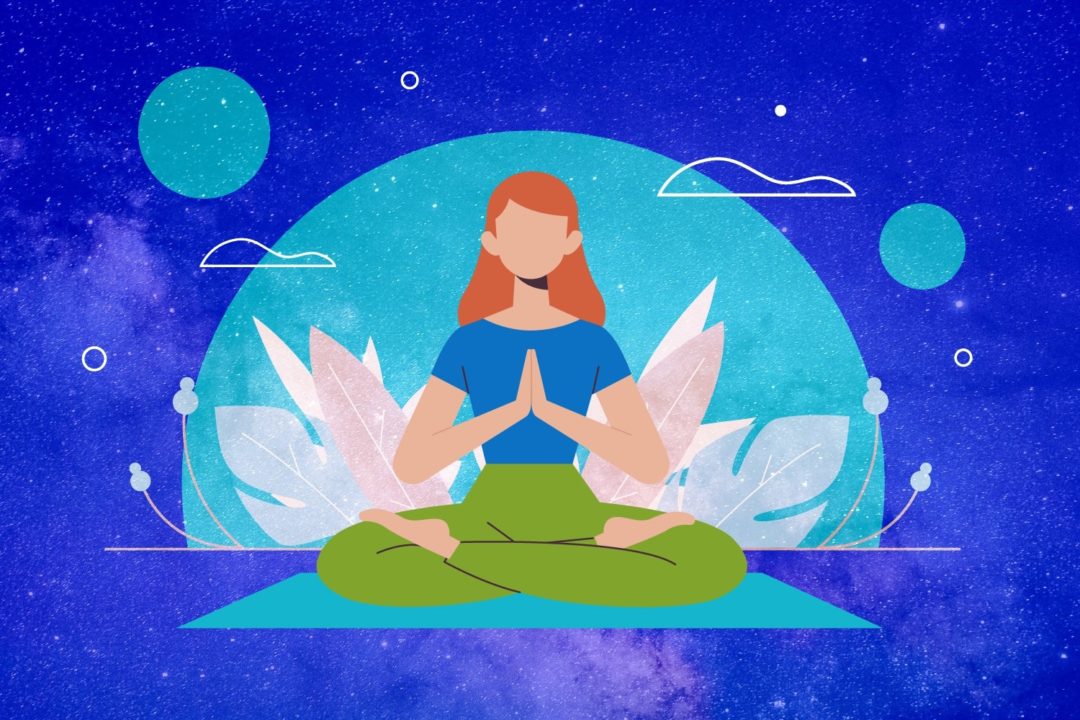
Just like the sharks, it makes sense that human beings have the ability to sense electromagnetic phenomena. We live on a beautiful planet kissed by sunlight and have eyes that allow us to see things in the light. Our world is filled with so many sounds, from the warbling of a songbird in the morning sunshine to the drilling of an industrial jackhammer on a noisy street and most human beings have developed ears to listen.
In addition, since our planet generates a magnetic field, doesn’t it make sense that human beings would have also developed the ability to detect bio-electric fields? And thus, we arrive at the mysterious and beautiful world of Qigong.
The bioelectricity generated by human beings is what ancient Chinese culture calls the ‘Qi’ in Qigong (pronounced chee-gong). On a conceptual level (and somewhat simplified), Qi means vital energy, information, breath or spirit. The second character, ‘Gong’ means cultivation or mastery (the type of work involved in honing a skill). Qigong is thus translated into ‘the cultivation of your energy’.
The way the thought goes is, everyone on earth has been born with a limited amount of energy. This energy, this life force, that makes you wake up in the morning and pursue your goals and strive to achieve your best life, is what fuels us. But the problem is as you grow older and we go through day-to-day life taking on more and more responsibilities, it can feel like the spark is gone. The enthusiasm we once had to tackle the various problems life threw at us seems to be lacking. It feels like a once vibrant part of us has died, never to return. Just like a mobile phone which is running on 10%, we can feel like we are losing charge by the minute.
The good news is that, where we differ from the mobile, we can learn to manage this energy. You see, it was never gone, it was always within you. But you were never taught to manage it. You can learn to do this by practicing Qigong. Once you understand that Qi is our natural form of energy and that this energy comprises the very basis of spacetime, it should be relatively straightforward to see that once you effectively learn to create the conditions for the energy (Qi) to flow freely throughout your body and enter your body from nature, your life will never be the same again.
Over the last two decades, the western world has slowly started to accept this Chinese approach to Qi and so has the modern medical world. The practice of cultivating Qi focuses on integrating cosmic (from nature and the universe) energy into the human body, with the ultimate goal of balancing all the physical, mental, emotional, and spiritual aspects of ourselves. In terms of Chinese medicine and Qigong, health is simply a balance of Yin (cooling, moistening and nourishing functions in the body) with Yang (warming, moving, and activating functions within the body). Qigong Meditation combines three elements; simple movements, the mind, and the breath, in order to create the conditions where the body and mind can return to their natural state of healthy balance.
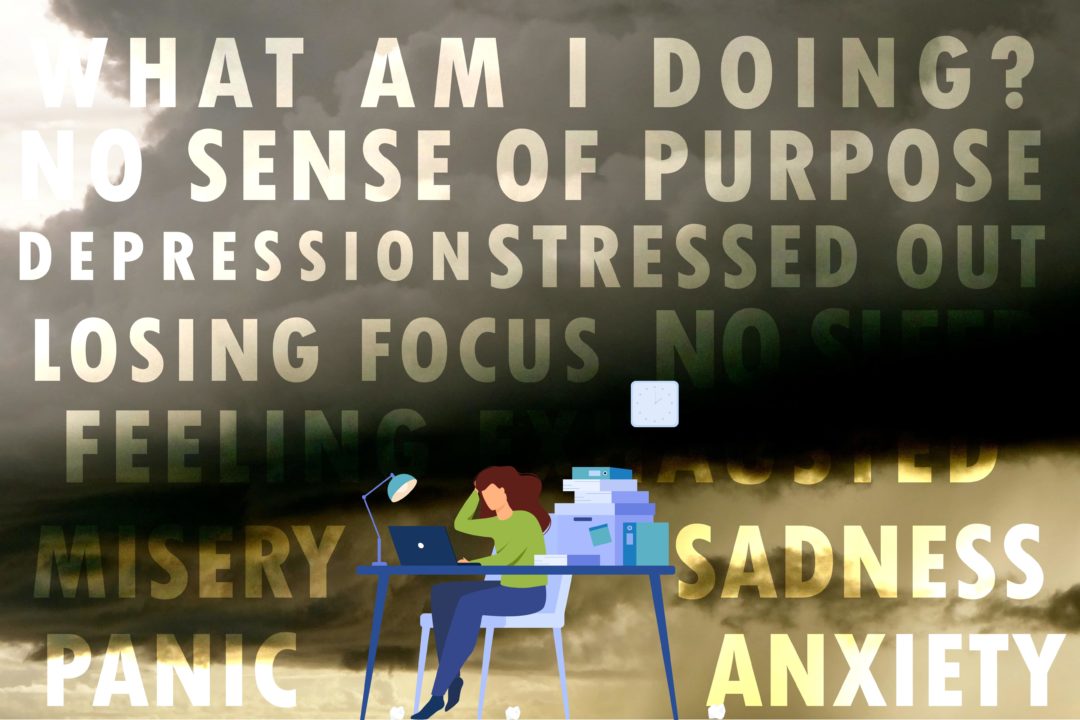
In today’s modern world of smartphones, internet usage, social media, and the constant thrum of negative news we are bombarded with too much information to the point of overwhelm. Is it any wonder that the modern world has the highest rates of anxiety and depression in our history? Living with stress can cause both internal imbalance within our body and mind, but also between ourselves and the natural environment. This disconnect causes an imbalance of Qi, Yin and Yang. This imbalance is what causes you to feel:
- Stressed out about your place in the world
- That you cannot cope with all the pressure on your shoulders
- That you cannot remember the last time you had a peaceful night’s sleep
- Exhausted for as long as you can remember
- Burned out from handling all of life’s immense responsibilities
- That you have lost focus on what were the important things in life
- Anxious and panicky about what your future is going to look like
- No clarity or sense of purpose, in essence, feeling ‘empty’
The Nature of Qigong Healing
Practicing Qigong can not only enhance your mental and physical health, but it can also help you to manage a number of medical conditions, perhaps even reducing the need for medicines and drugs.
In Qigong we use both still and moving meditation to create such conditions as to increase and regulate the Qi circulation in our bodies. The pressures of modern-day living can be overwhelming. You may try to alleviate stress by buying into the latest trend, the newest fad, the latest technology but it constantly feels like you are always playing catch up. This rarely works in the long term.
However, once you completely internalise and understand what Qigong is, you will realise that the answer lies within you. When you first start practicing Qigong, you may feel like nothing is happening. The motions and exercises may feel tedious and boring. You might feel impatient and want to move forward more quickly with your Qigong practice. You may feel like you are just going through the motions because moving your arms and legs during Qigong exercises may be something your body is not used to. But, over a period of time, gradually your body will relax into the movements and any anxiety or impatience will be transformed into peace, relaxation and calm.

The Importance of Balance & Harmony in Qigong
The Taoists, honing the art of Qigong over hundreds of years, have developed a different philosophy of looking at the world, a philosophy of harmony and balance, which is directly contrary to the Western world which always seeks to dissect and deconstruct the world around itself.
The Taoists view all humans as living organisms living within a larger living organism, ‘nature’, which then exists in harmony within an even larger living organism, the universe. As you keep practicing Qigong exercises, your whole being will start to feel more balanced. You will cease trying so hard to understand the world and fall in love with the idea that all you have to do is accept it as it is and embrace your harmony with it. However, realise that the most important part of Qigong is to observe, not the external environment but the internal, the world within, the one behind our eyes and ears; our mind. This is a fundamentally different way of looking at the world and it takes time to accept and adopt this mentality.
The earliest practitioners of Qigong, over decades of practice at looking inward, realised that there is no difference between the physical, emotional, psychological and spiritual selves. If any of these aspects are out of balance, it affects all the other aspects equally and throws our entire spiritual ‘ecosystem’ out of balance. Below are some examples to illustrate this point:
- A gym goer who only focuses on his physical body for validation will feel deep anxiety when he misses a workout or gains just a bit of weight. His whole life is based around calorie counting and making sure he always looks good.
- A spiritual teacher who keeps eating unhealthy fast food and doesn’t care about her weight might feel anxious when her healthy slim students seem to be happier than her, even though they don’t know spiritual theory.
- A therapist who always makes sure that she works 110 hours a week to make sure her patients are always in a good mental state but neglects her own mental health may soon burn out because she didn’t take care of herself.
As you dive deeper into the theory and history of Qigong it may seem that there is a lot to learn and process before we can even begin exercising. But that is a mistake; Qigong’s effectiveness lies in doing, not thinking about doing. Qigong is not a huge mountain, full of rocks and tough terrains to be scaled, instead think of it as a boundless ocean, where you stand on the beach amongst the shallow waters. You take one step after the next, and the ocean embraces you, regardless of your expertise. Once again, think of Qigong not as a method to work and gain energy, think of it as a way to unlock the energy that already exists within you. Let us look at 10 beginner exercises to get started with Qigong.
Qigong For Beginners: 10 Exercises
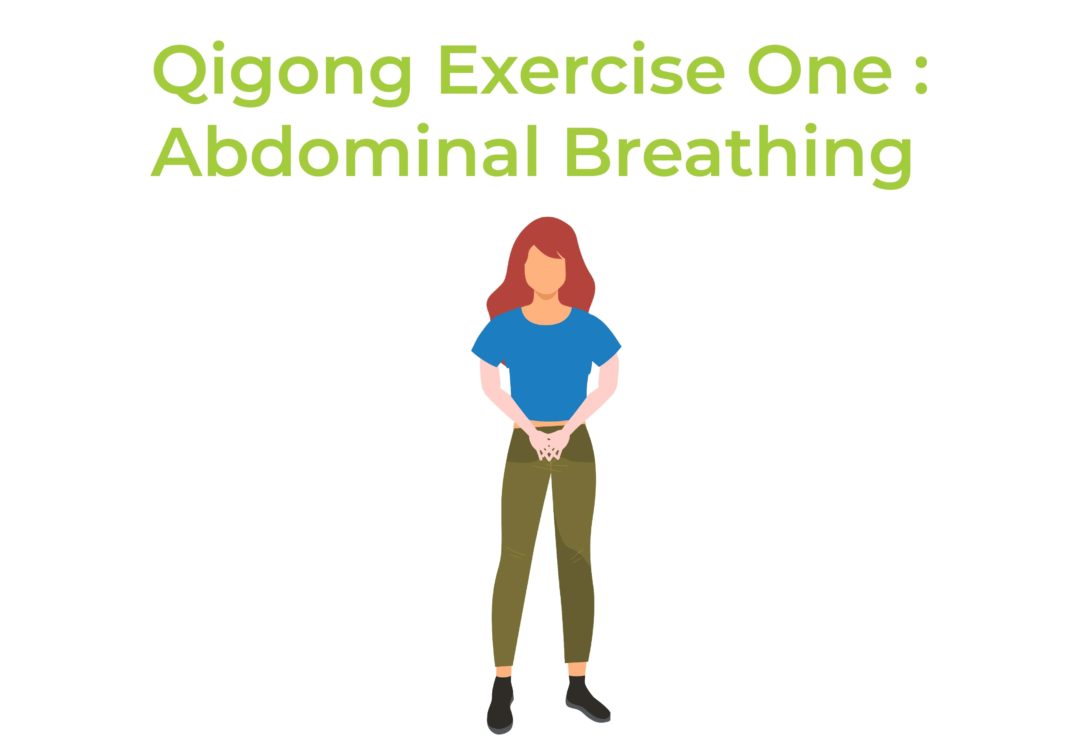
1. Abdominal Breathing or Diaphragmatic Breathing
Abdominal Breathing is the perfect Qigong for beginners exercise. It’s very helpful for giving you a bit more energy, calming your mind, relaxing your body, improving your sleep and improving your overall general wellbeing.
When you were born you breathed into your belly. As you breathed in, your belly would expand and then shrink as you breathed out. If you watch a baby or one of your pets at home when they are asleep you will see that as they breathe in the belly expands and as they breathe out the belly shrinks. The breath is very relaxed.
As we become older, usually by the age of about 7 or 8, our breathing becomes much shallower – chest orientated rather than belly orientated, probably due to day-to-day stresses and strains, and rushing around, even for children!
Qigong Abdominal Breathing is the ideal initial Qigong exercise for beginners because it is really only teaching you what you already know – you already did this as a baby!
Method
- Breathe in and out through the nose. As you breathe in expand the belly. If you place your hands flat on your lower abdomen, as you breathe in then you should feel your hands being pushed outwards as the belly expands.
- In order to make that happen, you need to be relaxed in the abdominal area. The best way to feel this is actually if you are lying down. It is much easier from this position.
- You can place your hand on the lower abdomen, or something heavier like a book on this area. You will then see your hand or the book rise up as you inhale and sink down as you exhale.
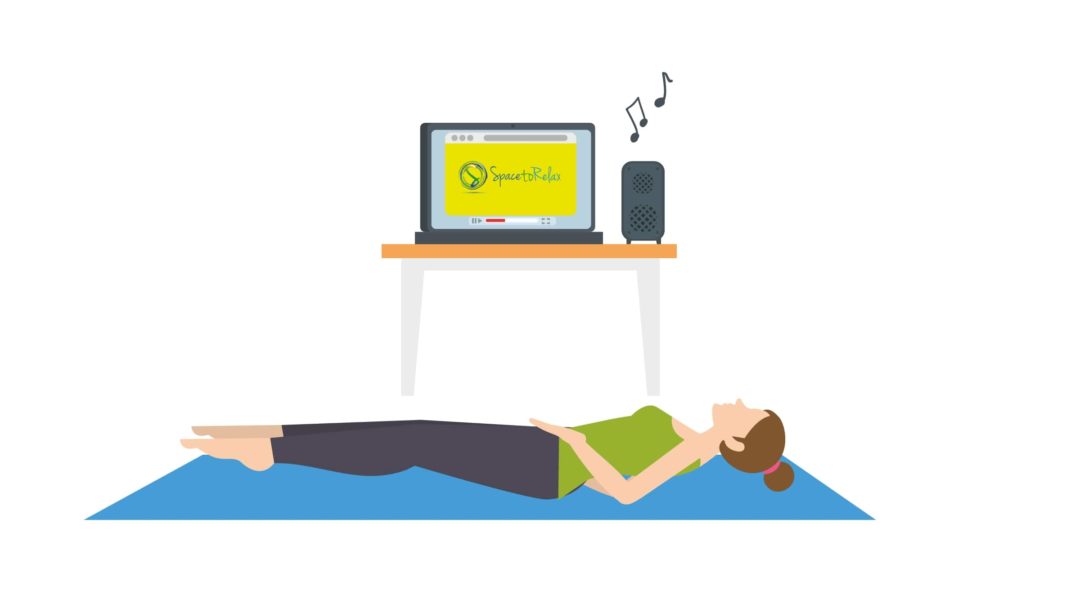
Here is a video version of this exercise, for all your visual learners!
Link to learn how to do abdominal breathing with some theory on why this is the most efficient way to breathe: How to do Abdominal Breathing
This is a wonderful exercise to get things started if you are interested in learning Qigong.
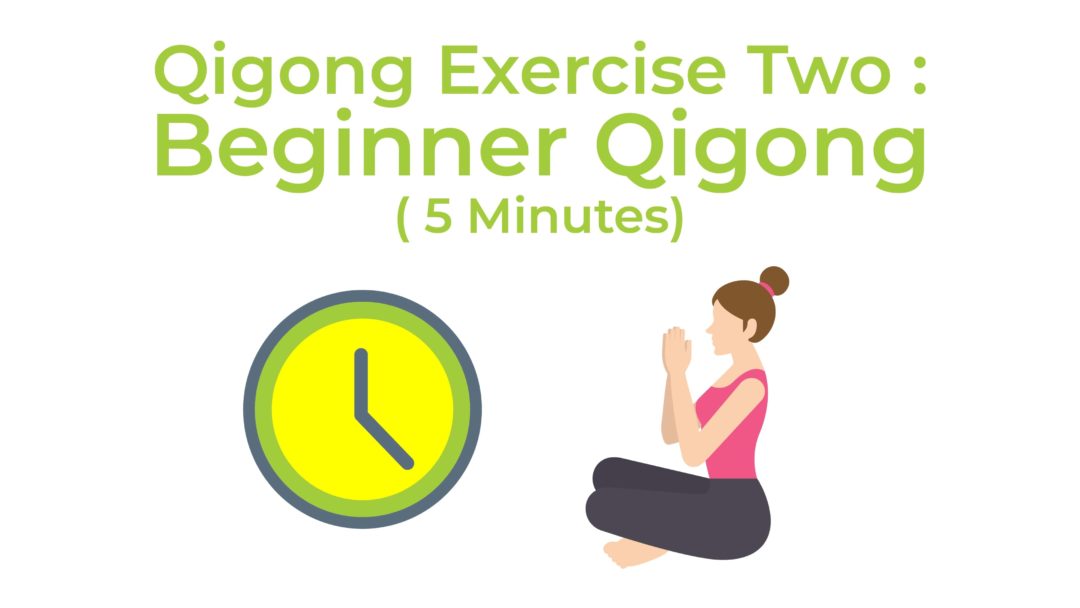
2. Qigong For Beginners (5 Minutes)
The Circles Exercise
- For this exercise, stand straight with your hands palm upwards in front of your stomach and feet slightly apart.
- Slowly move your arms apart and position and slowly turn the palms outwards until your fingers are facing outwards, palms facing up.
- Slowly keeping your hands palm upwards bring up both your arms to shoulder level. While doing this, think of drawing Qi up from the ground, through your feet and legs, through the body to shoulder level.
- From shoulder level bring the palms together in an upside-down V shape in front of your forehead. While doing this think that you are gathering energy from the outside world, drawing Qi inwards.
- To lower your hands, first drop the shoulders, drop the elbows so that the palms face each other and the forearms are parallel in front of your body. Draw the arms and hands down towards your abdomen, thinking of sinking the Qi down through the body in to the feet to ground yourself. Do on let your palms touch. This exercise should help you feel energised and relaxed.
- Repeat for as many times as you wish.
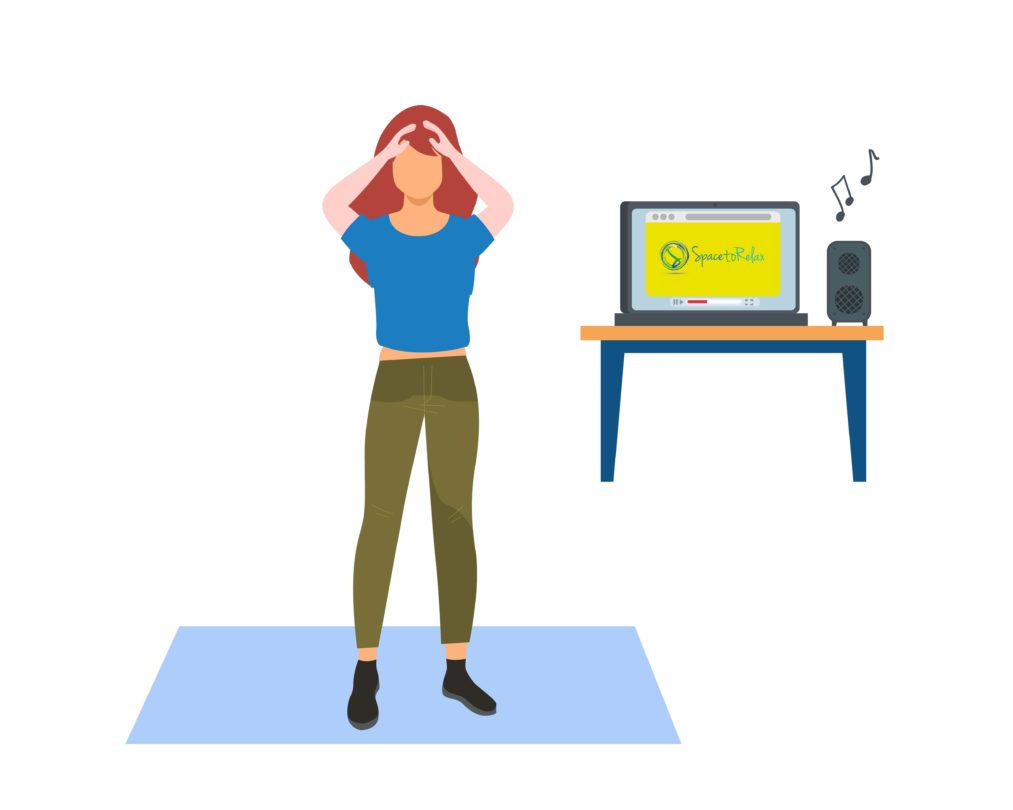
Discharge Waste Qi With Vibration
- Stand straight with your feet hip-width distance apart.
- With your hands by your sides, slowly start vibrating your body by bouncing up and down, bending the knees.
- As you do this the arms will shake. Keep the wrists very loose and relaxed. The head may nod up and down as the neck relaxes.
- Think of ‘sieving’ all the waste Qi from deep within your body up to the skin surface.
- As you breathe out think of the waste Qi leaving the skin surface, like raindrops horizontally leaving your body and disappearing into the sky.
- You can do this exercise as long as you want until you feel that you are relaxed and feeling positive.
Here is a video version of this exercise, for all your visual learners!
Link to one of my most popular Qigong for beginners video routines including the “Circles” and “Discharging” methods: Beginner Qigong Exercises
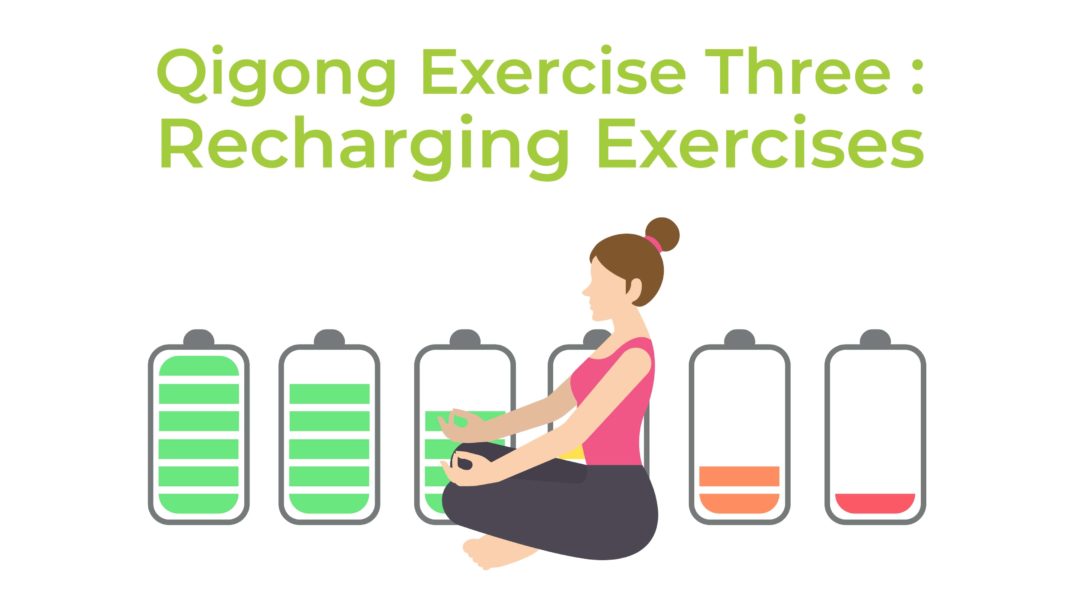
3. Qigong For Beginners – Recharge Exercises
This Qigong exercise shows you how to replenish your energy levels in situations where you have no opportunity to rest or perform a full Qigong routine. This method is called “Embracing The Tree” or “Standing Like A Tree” and can actually be performed sitting or standing.
Benefits include:
- Energizing your body;
- Massaging the internal organs by creating conditions for improved Qi flow;
- Calming your mind;
- Developing physical strength and stability in your legs;
- Improving your balance;
- Creating the conditions for open and free flow of Qi in order to smooth any areas of Qi stagnation that can manifest as discomfort or pain.
Method
- Begin by taking a comfortable standing or sitting position.
- Settle into your practice by relaxing your body and mind with Abdominal Breathing.
- Raise your arms into the “Embracing The Tree” position.



- Stand like a tree for however long is comfortable for you (3 minutes up to 45 minutes for more experienced practitioners).
- As you are standing, use your mind to extend down into the earth, as though you are a tree growing roots. At the same time extend your mind up to the top of your head, opening your crown to allow Qi from above to enter your body. Feel a heavy, grounded sensation in the lower half of your body and lightness from the waist up.
- Perform the “Circles” exercise three times to smooth the flow of Qi in the four directions.
- Consolidate your practice with a few abdominal breaths, taking time to observe any changes in the state of your body and mind.
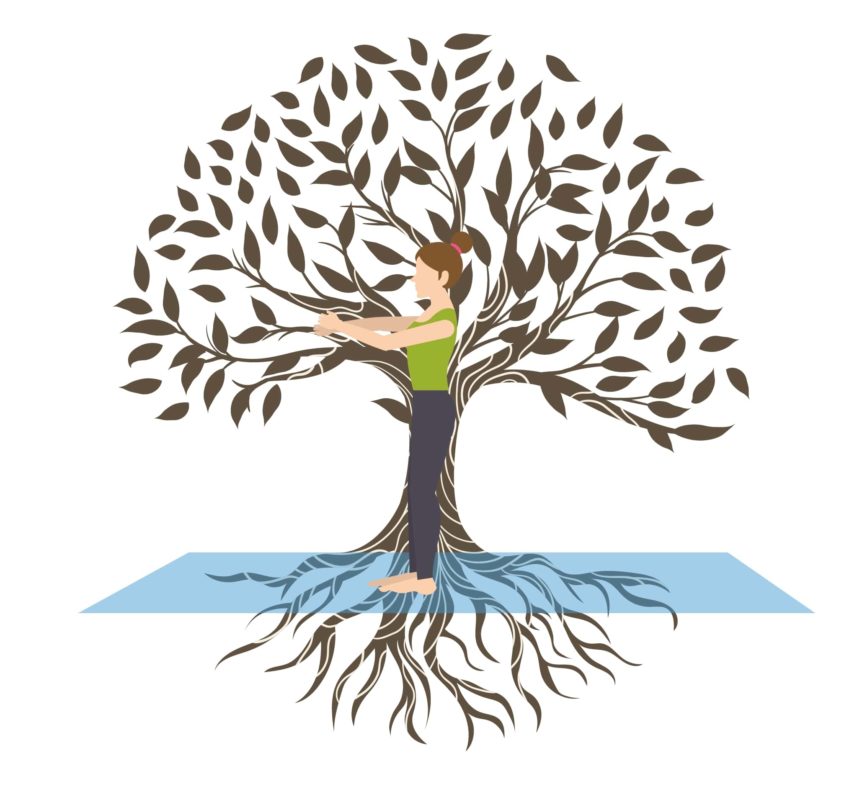
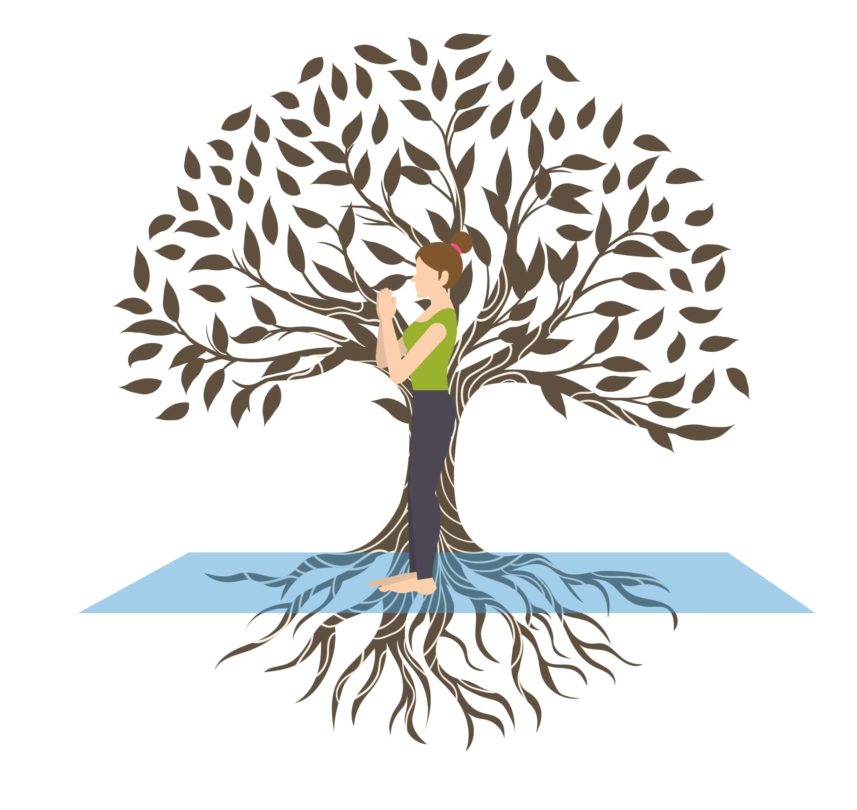
Perform this whole routine, or only part of it, whenever you have a few minutes. This Qigong method works in situations where you may feel you don’t have time to rest and recover but your energy levels are low. Use it for only a few minutes in order to quickly give yourself a welcome boost!
Follow this link to learn how to do this Qigong Recharge exercise for yourself: https://spacetorelax.com/qigong-recharge
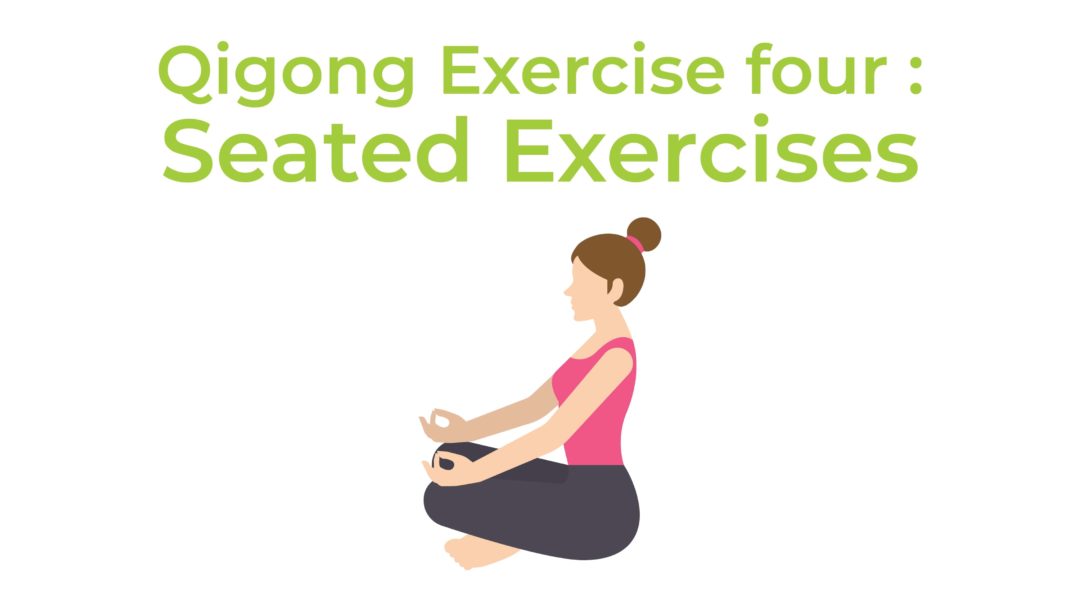
4. Seated Qigong For Beginners Exercise
Here, you can follow along with some seated Qigong exercises. Sitting Qigong can be helpful for you if:
- You are unable to stand for long periods of time;
- A joint condition or injury which causes you pain or discomfort when standing;
- You have problems with your balance, feel unsteady on your feet and so feel more confident exercising from a sitting posture.
The benefits of seated Qigong include:
- Being able to practice for longer than you would from a standing position if standing leaves you feeling tired or uncomfortable;
- Feeling much more grounded by using both the sit bones and the feet for grounding with the result that your mind feels calmer and more relaxed.
- Being able to experience the same feelings of open and free Qi flow, especially throughout the upper body as when standing.
- More easily being able to enjoy the flow of the breath and the focus of the mind without being distracted if the standing posture causes you physical discomfort.
Method
- Adopt the Qigong sitting posture (more here).
- Begin with Abdominal Breathing to get into the “Qigong State” of calm and relaxation. In turn, breathe into Dan Tian (in the lower abdomen), the sit bones and the feet to encourage the movement of Qi in a downward direction so that you feel more calm and grounded.
- In turn, begin with gentle movements to promote the free flow of Qi in the neck, shoulders, chest, and upper back, taking care not to overstretch.
- Lift one leg at a time. Repeat a few times. Then, with the leg lifted draw circles in the air with your knee. Repeat for the other side. Circle the ankles with the ball of the foot on the floor.
- Practice the “Circles” exercise to encourage Qi circulation in the four directions (see more detail here).
- End the practice with abdominal breathing, paying attention to how you feel physically, mentally, and emotionally.
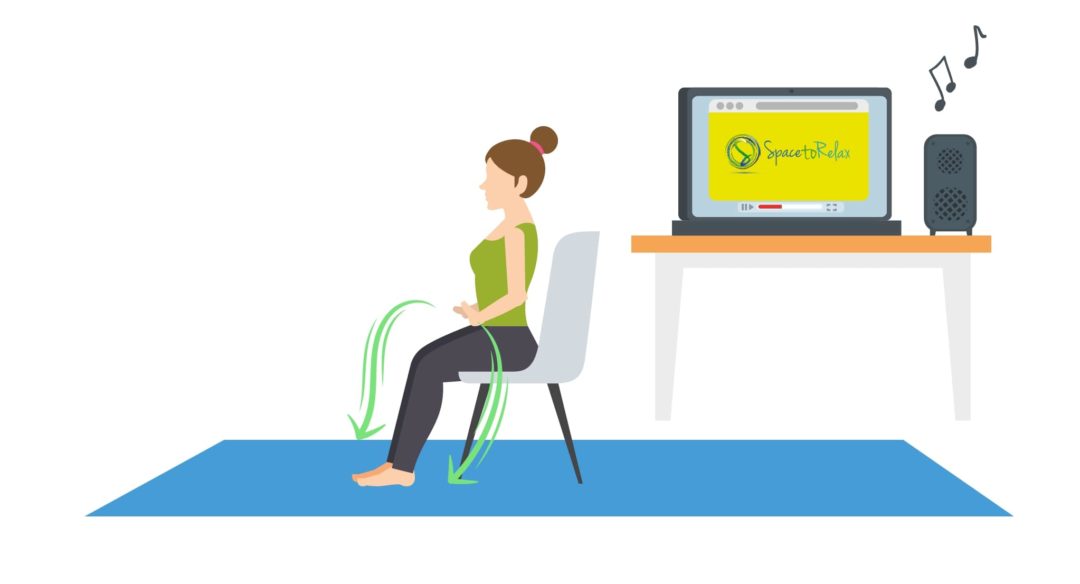
Integration into Your Day
You can practice the above seated Qigong exercises:
- At a desk, if you are working;
- On public transport (especially on a plane to help prevent swollen legs and boost leg circulation);
- In any situation where you find yourself sitting for a long period of time.
These simple seated Qigong stretches will help to reduce the likelihood of your body seizing up and becoming too stiff to move easily once you stand up.
Link to a seated Qigong routine – perfect for if you are feeling tired or have issues with balance or leg strength meaning that you cannot stand for long periods: Seated Qigong
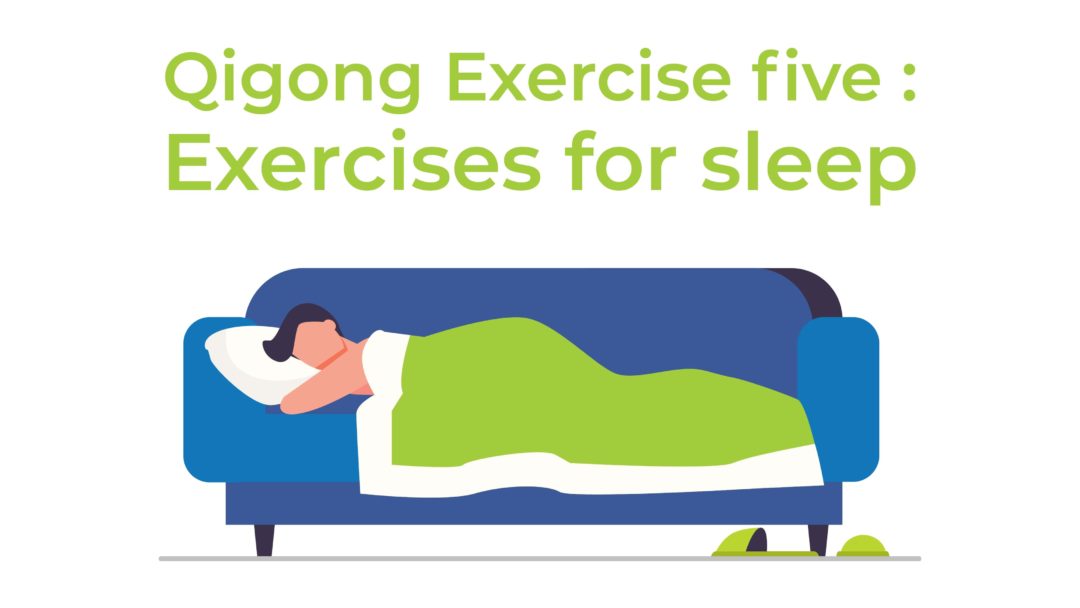
5. Qigong For Beginners – Sleep Method
We can only fall asleep quickly and enjoy uninterrupted sleep, waking refreshed in the morning if the mind is calm and relaxed. This meditation will bring you quickly into a deep state of peace and tranquillity so that you can easily fall asleep at night. It is also the perfect Qigong method to practice if you wake in the middle of the night and cannot go back to sleep.
Download the “Calm Your Busy Mind In 8 Minutes” free audio meditation here:
Meditation Free Download – Qigong Online by Space To Relax
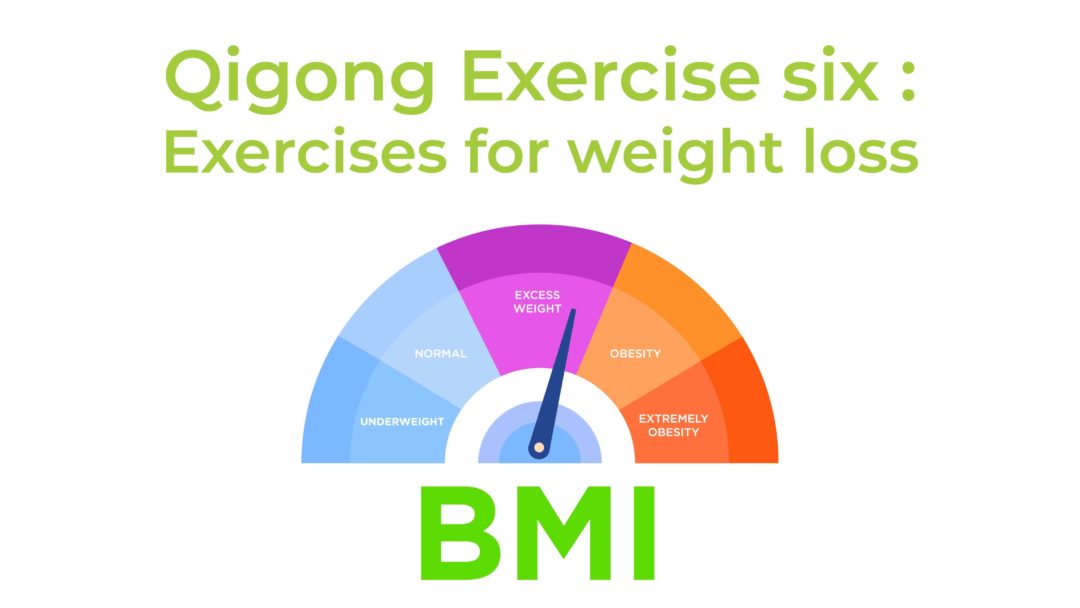
6. Qigong For Beginners – Weight Loss
This link will direct you to my page with resources on how to use Qigong for weight loss. There is no one exercise that can address such a multi-faceted issue but the information on this page will point you in the direction of some excellent Qigong exercises to try to support you as you lose weight. It also gives you more information on other helpful tips and resources when it comes to losing weight.
Link: Qigong for Weight Loss
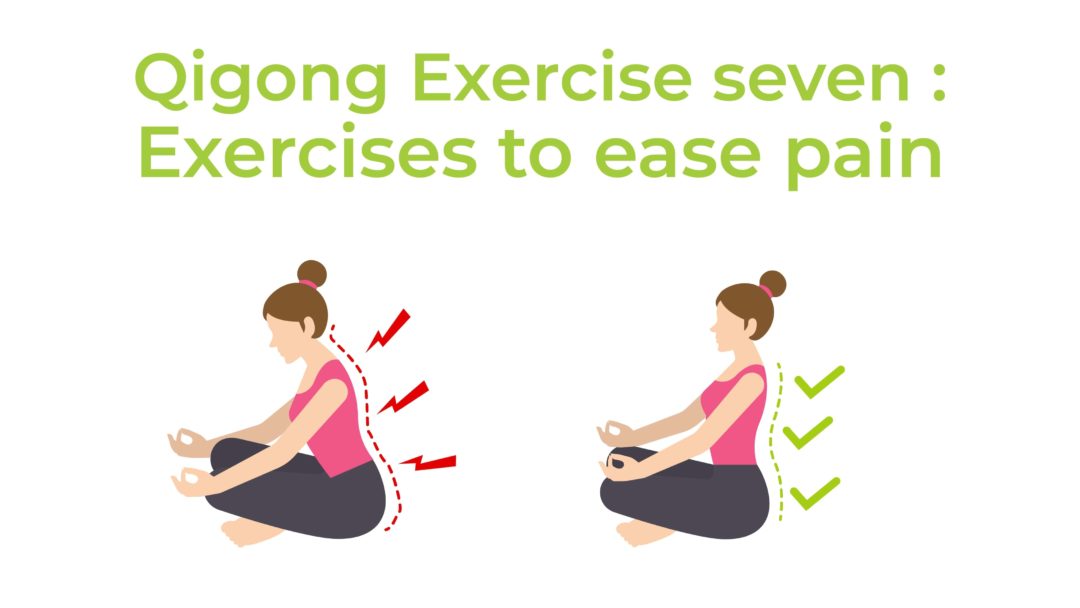
7. Qigong For Beginners – Meditation To Ease Pain
Qigong is also great for stress relief and reducing the pain present in your body. It has several benefits and once you are done with this exercise you should be able to experience a degree of pain relief.
Method
- Adopt the Qigong sitting, standing, or lying down posture.


- Begin with Abdominal Breathing to get into the “Qigong state” of calm and relaxation.
- Follow along with my voice as I talk you through the meditation.
- Choose an area of your body that is causing you discomfort or pain. Follow along with my voice as I talk you through a meditation to help ease the discomfort.
- End with Abdominal Breathing.
- Massage the area of discomfort or pain (if you can reach it) in order to promote circulation and nourishment in the area.
Learn how to apply this method to any aches, pains, and stiffness which you may be experiencing in your body by following along with the video on this page: https://spacetorelax.com/ease-pain
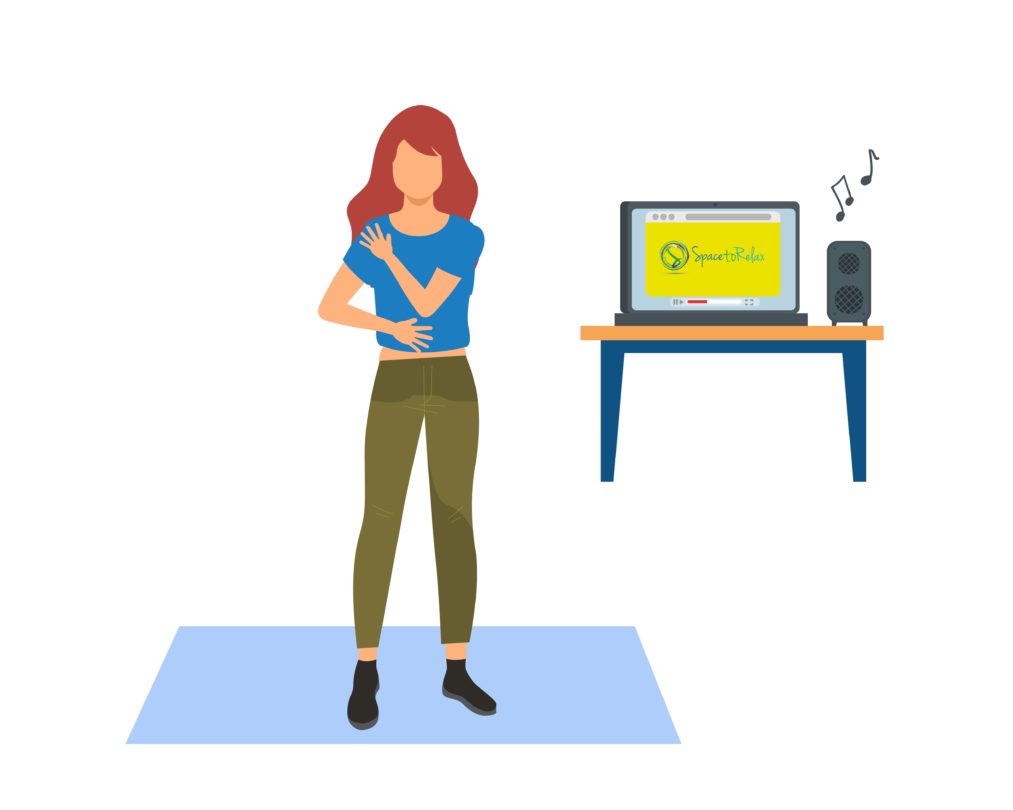
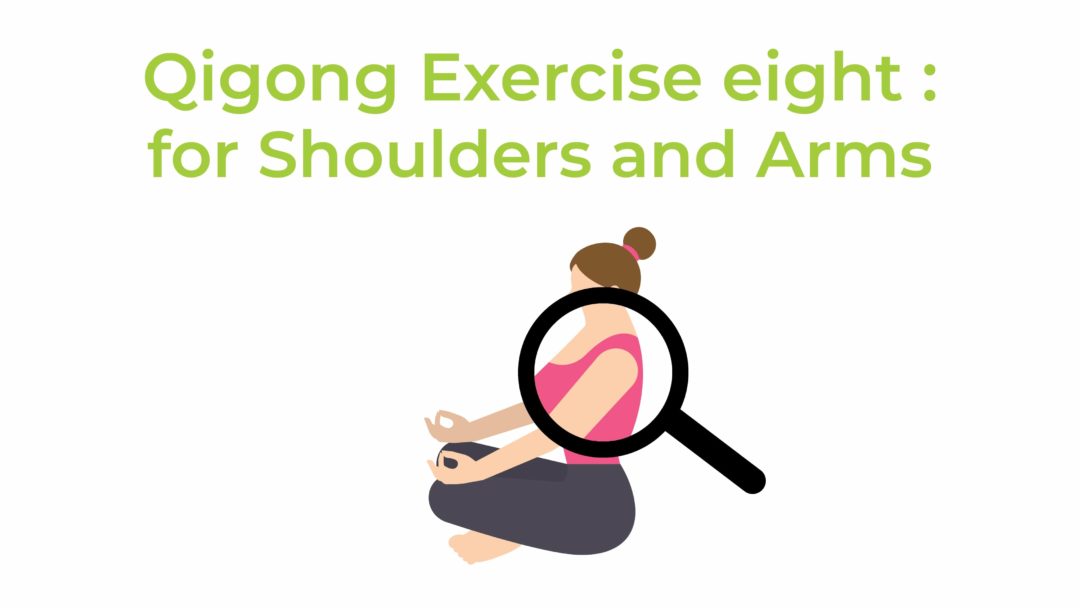
8. Qigong For Beginners – Shoulder & Arm Exercises
In this exercise, you can follow along with some simple methods of Qigong for arms, wrists, elbows and hands. You’ll learn how to help relieve aches, pains, and stiffness in these areas using easy-to-follow Qigong. You’ll also learn an acupressure point that can help relieve elbow, wrist and hand pain.
Method
- Use Abdominal Breathing to calm the mind and prepare yourself for your practice, focusing on the Dan Tian (lower abdominal) area.
- Using the mind and the breath tilt the neck forward and back, tilt side to side and turn side to side. Remember to breathe and smile!
- Perform shoulder shrugs and rotations to release any tension.
- With the arms held at shoulder level perform elbow and wrist movements, combining them with the breath and focusing the mind on the joints in order to allow for more Qi and blood flow to enter the areas.
- Open and close the hands method.
- Relax your arms by your sides, turning from one side to the other, allowing your arms to tap the back of the body as you are moving.
- End this routine with a few abdominal breaths, observing, in particular, any sensations in your arms and hands. Note the position and use of the acupuncture point Quchi (Large Intestine 11) and how to use acupressure to relieve elbow, arm and wrist pain.
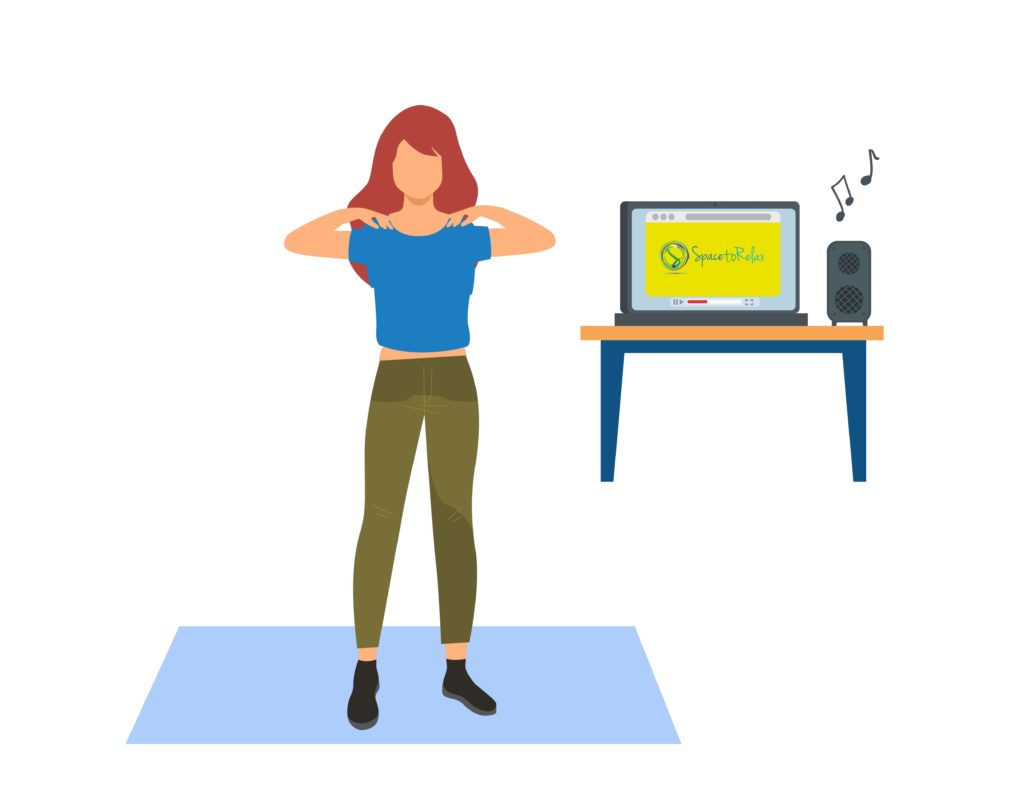
Use this routine for any shoulder stiffness, elbow, wrist and hand issues. It’s very helpful if you suffer with cold hands too: https://spacetorelax.com/shoulders-and-arms
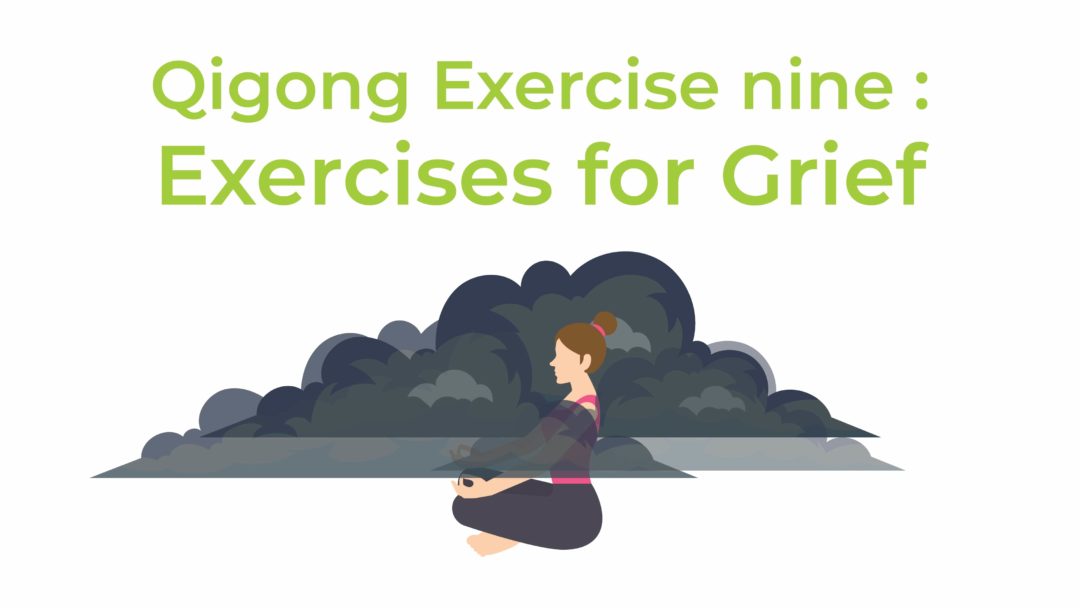
9. Qigong For Beginners – Healthy Release of Grief
Use this exercise to help you process grief in a healthy way. It can also be applied to help you cope with other emotions such as fear, anger, anxiety and overwhelm. These methods can also help support your mental health if you are suffering from depression.
What Impact Does Grief Have Upon Us?
In serious cases, the effects of grief may lead to suicidal thoughts, nicotine, drug and alcohol use, depression and an inability to complete simple daily tasks.
The emotional effects of grief include:
- Increased irritability
- Numbness
- Bitterness
- Detachment
- Preoccupation with loss
- Inability to show or experience joy
Grief can also affect our physical body and common symptoms include:
- Digestive problems
- Fatigue
- Headaches
- Chest pain
- Sore muscles
What is Grief in Terms Of Traditional Chinese Medicine (TCM)?
In TCM terms grief is the associated emotion of the Lung system. Therefore we need to nourish and strengthen the Lungs in order to help us process and let go of grief in a healthy way. Obviously, there is no timetable for this as it depends on the individual and the degree of loss which they have suffered.
3 Methods of Qigong For Grief
Any Qigong methods which help us to get rid of or “Discharge” grief and nourish or “Tonify” (build up) the Lung system will be helpful.
The three methods below are a good starting point for you to let go of grief in a healthy way.
1. Lung sound of the Six Healing Sounds. This method is shown in the following link below and is a method of discharging waste Qi (including the emotion of grief) from the Lungs using a specific sound.
Link: https://spacetorelax.com/qigong-for-grief/
2. Discharge Qi With Vibration Method. This is Lesson 2 above. Be loose, allowing the knees, wrist joints and neck to be relaxed. As you do this think of “sifting” the emotion of grief up to the skin surface with the vibration of your body. As you breathe out release the grief from the skin surface, like raindrops moving away from the body. Continue with this for as long as it takes you to feel more comfortable.
3. Qigong Standing Meditation. Hold your hands in front of your chest, palms facing each other like you are holding a ball. Feel the energy between your hands. This is a ball of Qi. You may want to visualise it as a white light penetrating into the lungs and energising them. This method is shown in more detail in Lesson 3 – Qigong Recharge Exercises.
You can use one of these methods of Qigong for grief either alone or practice them in the order I’ve listed them, finishing with the meditation. It is always better to discharge or let go of what you no longer want in your body before you bring healing energy in with a method such as the Qigong standing meditation above.
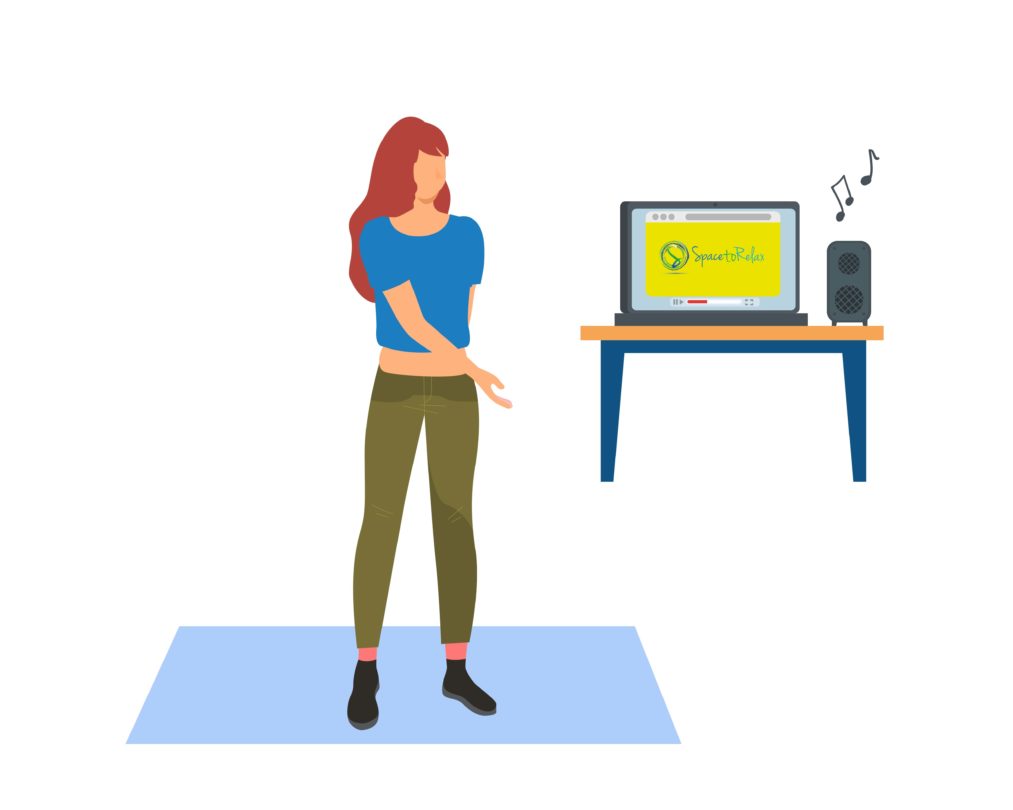
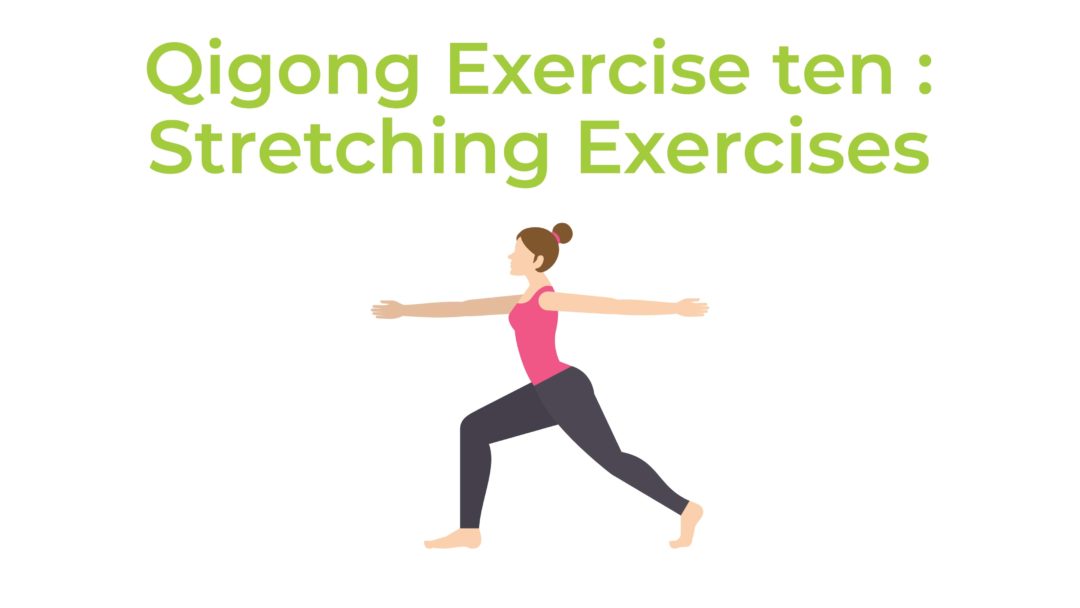
10. Easy Qigong For Beginners Stretching Exercise
This routine shows you some Qigong stretching exercises which combine simple movements, mind focus and breathing as a Qigong “moving meditation” to create more length and space in the body and calm the mind, bringing your physical and mental health back into a healthy balance.
Introduction
Qigong stretching is quite different from conventional stretching in that it is much more than physical exercise. Easy Qigong stretching incorporates movement but the mind and breath are equally important. Qigong stretching creates more length and space in the body which, in turn, allows for a more open, unobstructed flow of Qi and blood. This results in the body and mind coming back into their natural healthy balance.
Method
- Begin with abdominal breathing to bring yourself into the Qigong state.
- Neck tilts and turns.
- Shoulder blades stretch – forwards and backwards.
- Press palms and fists.
- Twist to both sides.
- Sideways bend.
- Hamstring stretch.
- Groin stretch.
- Achille’s tendon stretch.
- Vibrate the body.
- Abdominal breathing to consolidate your practice.

This is the perfect method to wake up the physical body first thing in the morning and set you up feeling energised and invigorated for the day: https://spacetorelax.com/a-simple-qigong-stretch/
Myths about Qigong
1: Qigong Is A Huge Time Investment
There is the idea that if you are going to do relaxation exercises then you need to put a certain amount of time aside every day to do this. Because of this, many people find breathing and relaxation exercises very difficult to implement. They have the idea that they would like to do some form of relaxation exercise but never seem to get around to doing it. They just don’t have time.
From my point of view, this is a huge misconception. As I teach Medical Qigong online through my Space To Relax programme and in face-to-face workshops, the main focus of that teaching is to show my students how to integrate Qigong breathing and relaxation exercises into their day. I know myself that if I have to put aside and allotted time every single day for practice then it is very hard to keep to that….but….I also know that if I’m able to integrate Qigong exercises into my day then I can do it so easily – it just happens!
Qigong exercises can be done when you are walking, standing in a queue at the post office or in the supermarket, in bed at night just before going to sleep (using some of the Qigong breathing and meditation exercises). It’s very easy to integrate Qigong breathing and meditation exercises into your day.
So, if you have found in the past that you have been discouraged from practicing any kind of relaxation exercise because of the time factor and having to make a slot available in your day then be discouraged no longer!
The benefits of Qigong breathing and relaxation are huge and numerous. They will help you to relax, relieve your stress and overwhelm. Many will help you to sleep peacefully at night or give you much more energy so that you can achieve much more in your day than you thought possible, taking it all in your stride.
I would encourage you to try some Qigong exercises so if you are thinking, “Yes, I can do this, this will be workable for me” then head over to https://spacetorelax.com/meditation-free-download/ to download a free Qigong meditation called “Calm Your Busy Mind in 8 Minutes”. Once downloaded you can listen to it on your laptop or phone whenever you have a tiny bit of relaxation time while sitting enjoying a cup of tea or just before going to sleep at night. This method is so easy to integrate into your day as it takes so little time.
2: Qigong Movements Need To Be Perfect To Benefit From Them
Two of the most common questions I’m asked when teaching Qigong is:
“How much do I have to concentrate on my thinking to get it right?”
“How do I know I’m performing the movements correctly?”
Well, the answer is that your thinking and your movements should be “casual”, almost “sloppy”.
Regarding the role of your mind, it’s as if you fleetingly think of the thing you are being asked to think of and then let it go – you lightly touch it with your mind. Too much thinking and concentration will only give you a headache so remember this when you are practicing – don’t think too hard!
In terms of the movements, everyone has their own individual range of movement and flexibility and it’s best not to push yourself beyond that (and certainly never to the point of pain). The movements I teach can be adapted to the requirements of any individual student so never be too concerned about copying the moves of any teacher exactly. When you are practicing a method, paying too much attention to the minutiae of a movement is not necessary, especially if you are a beginner. Instead, pay attention to how comfortable and relaxed you feel. That is your indication of whether you are practicing in a way that will give you maximum benefit. Putting yourself under pressure or stress in order to “get a movement right” will only lead to more stagnation of Qi flow, instead of creating the conditions for the free flow of Qi.
3: I Will Need To Adopt A New Religion Or Spiritual Belief To Practice Qigong
Absolutely not. Qigong is simply working with the breath, mind and simple postures to restore your health – and everyone wants to be healthy, regardless of their religion or spiritual belief.
Story Behind Space To Relax
You are reading this because you were meant to be here right now, on this page. I suspect you did not find me by chance – there is no such thing but are here because you are looking for effective methods to upgrade your health. You may have other issues that you would like to address but, upon digging deeper, you will find that 99% of them can be taken care of by taking care of yourself and developing robust, long-lasting health.
I am Janice Tucker, a half English, half Welsh woman, living in Ireland, practicing Chinese medicine and acupuncture, and teaching Qigong (how’s that for a mixture)! I help people who want to take positive steps to augment their health.
Qigong Benefits
If you are someone who is struggling with any of the following, then Qigong could help you:
- Anxiety
- A “won’t switch off” mind
- Stress
- Overwhelm
- Inability to focus
- Exhaustion
- Stiff/painful joints
You may be fed up with feeling like you are “fire-fighting” your way through life with very little control. Perhaps you’re worried that if your current lifestyle continues in this way then it could ultimately lead to burnout and almost certainly be set you up for some health problems down the line.
You are looking to relax and calm your busy mind, quell anxiety and stress, enjoy peaceful sleep, melt away the pain and tension in your body, elevate your mood and minimise overwhelm so that nothing throws you off course.
I am able to help you by guiding you every step of the way down the road to becoming bright-eyed and bushy-tailed!
For more than 15 years, I have been helping thousands of people just like you to achieve an optimistic, confident attitude to presiding over their health now AND IN THE FUTURE.
About Me
My Virgo perfectionist trait has driven me down a “want to know everything” pathway leading to a degree and Ph.D. in Zoology, a qualification as a secondary school science teacher, a Licentiate in Traditional Chinese Medicine & Acupuncture, and 4-month long study visits to train in Medical Qigong at the University of Traditional Chinese Medicine in Guangzhou, China. (I still can’t quite believe I did all that without having a mental meltdown!). I also have an annoying personality flaw which is perfectly fulfilled by doing what I do but more about that later.
More than 20 years ago I learned that Western medicine can offer some spectacular solutions to medical conditions and illnesses (it saved the life of one of my immediate family). At this time I never imagined that I would open my mind to the world of Chinese medicine and Qigong. However, here’s how I (semi-strategically with a bit of divine intervention) fell into what I’m doing now…
The Incident
Upon moving to Dublin to be with my partner at the time, I was faced with a huge dilemma – no job!
The Search
I applied to numerous scientific companies for work with no luck. As a non-Irish speaker I could not teach in an Irish secondary school because, at that time, Irish language was a requirement for teachers. So many qualifications and seemingly unemployable! This was a huge challenge to my feelings of not being good enough and for a few months I felt pretty hopeless.
The Answer
After much soul searching and giving myself a stern talking to, I stopped feeling sorry for myself took professional careers advice. That is when Chinese medicine popped up on the radar. It was the perfect solution for me. I was able to put my biology background to use, learn something new and challenging, and fulfil my passion of helping people. It’s also the only job I’ve ever done where I haven’t been bored within a year!
A few years ago I had the unique opportunity to gain an international qualification as a CINERGY® certified Conflict Management Coach. You may wonder how this could possibly fit into my Chinese Medicine and Qigong world!
Just ask yourself this – have you ever experienced worry, anxiety or anger because of a conflict with a family member or someone at work – so much so that it made you ill?
Well, there you have it, conflict can make you sick! How many people take days and weeks off work because of stress? Often this is due to a terrible relationship at work which has driven them crazy with worry or frustration.
I think you’ll agree that being able to move away from a situation of feeling so bad about a conflict that it makes you ill to a place where you feel some sense of resolution or peace of mind can only improve your health.
How My Eclectic Background Can Help You
Since qualifying in 2000 I have been developing my reputation as an experienced Chinese medicine and Qigong practitioner. My well-established clinical practices in Kerry, Ireland have allowed me to gain a unique 3-pronged perspective around the world of health management:

- A background in conventional biology allows me to understand health in a conventional way.
- A licentiate in Chinese medicine training allows me to view health from the 5000ft view – to know that your health depends on many factors; diet, exercise, sex, emotions, work, family, relationships, etc.
- My Qigong training and my teaching experience bestowed upon me even more ways to help you to learn how to manage your health for yourself, nipping potential problems in the bud before they become a huge, unmanageable, worrisome pain in the butt!
- A qualification in Conflict Management Coaching allows me to help you learn how to manage “difficult” and “challenging” relationships, especially if they are having a negative impact on your health, and especially if they involve family members or people you see at work every day who you can’t exactly just cut out of your life!
I am so grateful and fortunate that I’ve been able to spend the last 20 years helping and teaching thousands of face-to-face, motivated clients and students to make whopping differences to the state of their physical, mental and emotional health.
I Believe That…
- anyone can learn how to turn their health around.
- you can be in control of your life.
- nobody need worry how to take the helm where their future health is concerned.
My blend of understanding of Western and Chinese medicine puts me in a unique position to help thousands more people. If you are feeling stuck in the mud and are looking to take positive action towards fulfilling your health potential but not quite sure how to go about it, then why not think about working with me?
My purpose is to show as many people as possible how to rebalance their health without using up their life savings! Creating the Space to Relax online programme allows me to use my experience of teaching “in-person” Qigong workshops to hundreds of students and fulfil this mission by offering even more of you the opportunity to truly blossom, flourish and put yourself back “in the pink”.
Oops, almost forgot…my annoying personality flaw is that I have an uncontrollable urge to want to fix people, even if they don’t want me to fix them! My family and friends find this irritating, to say the least. Having a steady flow of clients and students who want to be “fixed” has allowed me to get my fix of “fixing”, significantly decreasing close encounters of the “just butt out” kind with my loved ones!
Summary
Hopefully, you are now somewhat wiser about the origins, benefits, and common misconceptions surrounding Qigong.
You probably found that a couple of the 10 beginners Qigong exercises jumped out at you as the ones you’d like to practice so please give them a try. If you have any questions please contact me via the chat box in the bottom right of this page or join my free Facebook group and post a comment there. I’m here to help so please don’t be shy. 🙂

